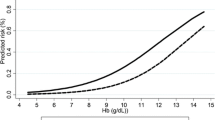Abstract
Background: Central nervous system (CNS) involvement is a common complication in haemolytic uraemic syndrome (HUS). Various imaging findings have been described, mostly as case reports. Although there are a few retrospective studies on larger patient groups there is no report that focuses on MRI. Objective: To analyse the CT and MRI studies of patients with neurological complications of HUS, to describe the typical imaging findings, and to evaluate their predictive character with regard to follow-up examinations and clinical outcome. Materials and methods: Of 57 patients with clinically proven HUS who were referred to our hospital between 1995 and 2003, 17 had signs of serious CNS involvement and 10 underwent neuroimaging. Nine MRI and seven CT studies were performed in the acute phase and five MRI and two CT studies were done for follow-up. Results: In six patients, pathological imaging findings were seen on CT or MRI performed in the acute phase of the disease whereas CT and MRI scans were completely normal in four patients. All patients with positive imaging findings had pathological changes within the basal ganglia. Additional findings were seen in the thalami (n=2), cerebellum (n=2) and brain stem (n=1). On follow-up imaging performed in five cases, the pathological imaging findings had resolved completely in two and partially in three patients. All patients had a good neurological outcome. Comparing the various MRI findings, a haemorrhagic component within an acute lesion was the most reliable parameter predicting residual pathologic findings on follow-up imaging. Conclusions: Basal ganglia involvement is a typical finding in patients with neurological complications of HUS. Even in patients with severe CNS involvement on acute imaging studies, prognosis was favourable for clinical outcome and resolution of pathological imaging findings.


Similar content being viewed by others
References
Siegler RL (1994) Spectrum of extrarenal involvement in postdiarrheal hemolytic-uremic syndrome. J Pediatr 125:511–518
Eriksson KJ, Boyd SG, Tasker RC (2001) Acute neurology and neurophysiology of haemolytic-uraemic syndrome. Arch Dis Child 84:434–435
Cinolai N, Morrison BJ, Carter JE (1992) Risk factors for the central nervous system manifestations of gastroenteritis-associated hemolytic-uremic syndrome. Pediatrics 90:616–621
Gallo GE, Gianantonio CA (1995) Extrarenal involvement in diarrhoea-associated haemolytic-uraemic syndrome. Pediatr Nephrol 9:117–119
Ren J, Utsunomiya I, Taguchi K, et al (1999) Localization of verotoxin receptors in nervous system. Brain Res 825:183–188
Taylot FB, Tesh VL, DeBault L, et al (1999) Characterization of the baboon responses to shiga-like toxin. Am J Pathol 154:1285–1299
Fujii J, Kinoshita Y, Kita T, et al (1996) Magnetic resonance imaging and histopathological study of brain lesions in rabbits given intravenous verotoxin 2. Infect Immun 64:5053–5060
DiMario FJ, Brönte-Stewart H, Sherbotie J, et al (1987) Lacunar infarction of the basal ganglia as a complication of hemolytic-uremic syndrome. Clin Pediatr 26:586–590
Theobald I, Kuwertz-Bröking E, Schiborr M, et al (2001) Central nervous system involvement in haemolytic uremic syndrome (HUS)—a retrospective analysis of cerebral CT and MRI studies. Clin Nephrol 56:3–8
Barnett ND, Kaplan AM, Bernes SM, et al (1995) Hemolytic uremic syndrome with particular involvement of basal ganglia and favorable outcome. Pediatr Neurol 12:155–158
Nakamura H, Takaba H, Inoue T, et al (2003) MRI findings of hemolytic uremic syndrome with encephalopathy: widespread symmetrical distribution. J Neuroimaging 13:75–78
Taylor MB, Jackson A, Weller JM (2000) Dynamic susceptibility contrast enhanced MRI in reversible posterior leukencephalopathy syndrome associated with haemolytic uraemic syndrome. Br J Radiol 73:438–442
Schmidt S, Gudinchet F, Meagher-Villemure K, et al (2001) Brain involvement in haemolytic-uraemic syndrome: MRI features of coagulative necrosis. Neuroradiology 43:581–585
Sherwood JW, Wagle WA (1991) Hemolytic uremic syndrome: MR findings of CNS complications. AJNR 12:703–704
Ogura H, Takaoka M, Kishi M, et al (1998) Reversible MR findings of hemolytic uremic syndrome with mild encephalopathy. AJNR 19:1144–1145
Kelles A, Van Dyck M, Proesmans W (1994) Childhood haemolytic uraemic syndrome: long term outcome and prognostic features. Eur J Pediatr 153:38–42
Gianviti A, Tozzi AE, de Petris L, et al (2003) Risk factors for poor renal prognosis in children with haemolytic uremic syndrome. Pediatr Nephrol 18:1229–1235
Bale JF, Brasher C, Siegler RL (1980) CNS manifestations of the hemolytic-uremic syndrome. Relationship to metabolic alterations and prognosis. Am J Dis Child 134:869–872
Signorini E, Lucchi S, Mastrangelo M, et al (2000) Central nervous system involvement in a child with hemolytic uremic syndrome. Pediatr Nephrol 14:990–992
Yasuhara A, Araki A, Ochi A, et al (2000) Magnetic resonance imaging of brain lesions of a patient with hemolytic uremic syndrome following Escherichia coli O157 infection. Pediatr Int 42:302–305
Hager A, Staudt M, Klare B, et al (1999) Hemolytic-uremic syndrome with involvement of basal ganglia and cerebellum. Neuropediatrics 30:210–213
Jeong YK, Kim IO, Kim WS, et al (1994) Hemolytic uremic syndrome: MR findings of CNS complications. Pediatr Radiol 24:585–586
Ho VB, Fitz CR, Chuang SH, et al (1993) Bilateral basal ganglia lesions: pediatric differential considerations. Radiographics 13:269–292
Author information
Authors and Affiliations
Corresponding author
Rights and permissions
About this article
Cite this article
Steinborn, M., Leiz, S., Rüdisser, K. et al. CT and MRI in haemolytic uraemic syndrome with central nervous system involvement: distribution of lesions and prognostic value of imaging findings. Pediatr Radiol 34, 805–810 (2004). https://doi.org/10.1007/s00247-004-1289-2
Received:
Accepted:
Published:
Issue Date:
DOI: https://doi.org/10.1007/s00247-004-1289-2




